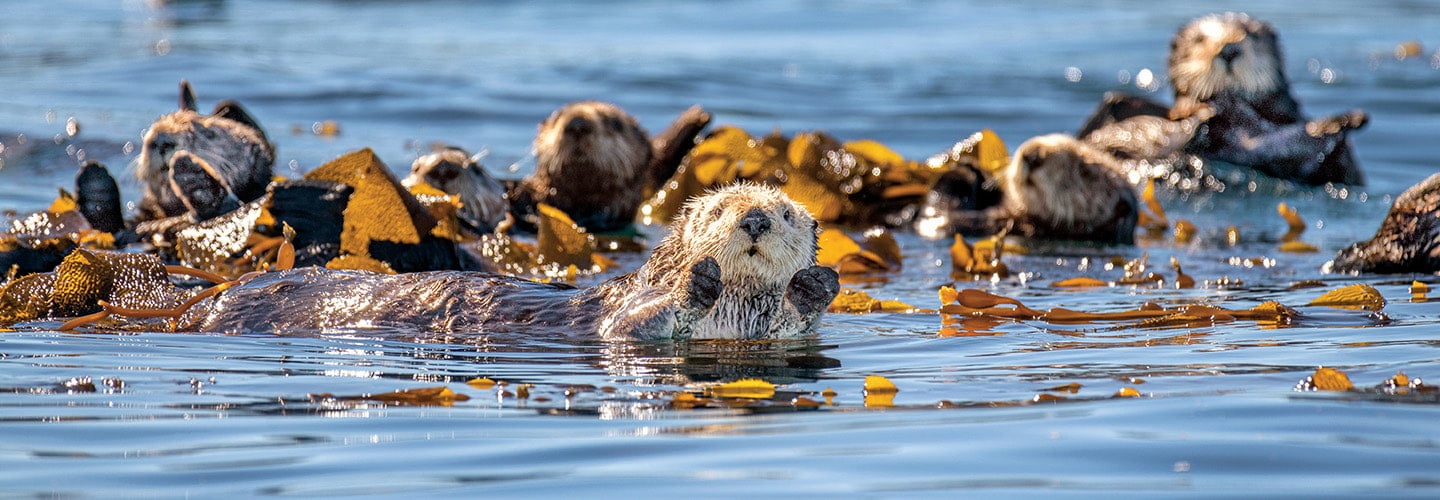Shutterstock.com
A sea urchin
A southern sea otter swims on her back. Her pup rides on her belly. The mother carefully wraps a seaweed leaf around the baby otter. This will keep the pup from floating away while she dives underwater to hunt. When she returns, she holds a spiky-shelled creature called a sea urchin. She shares the meat from inside the shell with the pup.
Today, this is a common scene along the California coast. But that wasn’t always the case. Sea otters were once nearly wiped out.
Over the past century, the critters have started to bounce back. That’s a good thing—and not only for sea otters. A recent study shows that these creatures are helping to protect kelp forests, the ecosystems they call home.
A southern sea otter swims on her back. Her pup rides on her belly. The mother carefully wraps a seaweed leaf around the baby otter. This will keep the pup from floating away. Meanwhile she dives underwater to hunt. When she returns, she holds a spiky-shelled creature. It’s called a sea urchin. She shares the meat from inside the shell with the pup.
Today, this is a common scene along the California coast. But that wasn’t always the case. Sea otters were once nearly wiped out.
Over the past century, the critters have started to bounce back. That’s a good thing. And it’s good not only for sea otters. A recent study shows that these creatures are helping to protect kelp forests. These are the ecosystems they call home.

